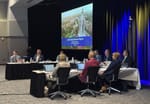South Dakota education officials have struggled to revise social studies standards that include guidelines for teaching Native American history and culture, but a new poll suggests state residents are very firm in their support for inclusion of Native studies in public schools.
The poll of 500 registered South Dakota voters in October showed that 88% of respondents were very or somewhat supportive of teaching Native history and culture in South Dakota schools. The poll showed that 6.4% of respondents said teaching Native studies was not too important, 2.6% said not at all important and 3.2% were unsure.
The poll results come at a time when the public school system in South Dakota is grappling with how to update its social studies standards and improve the teaching of civics and history. The discussion over what history to teach in public schools in South Dakota has raised concerns of some Native American groups that Native history will be reduced, eliminated or whitewashed to ignore the historic and modern traumas suffered by many Native Americans, the state’s largest minority group.
The poll results also arrived as the state Department of Education has reported that fewer than half of educators in South Dakota schools are using the Oceti Sakowin Essential Understandings and Standards, a set of state-approved concepts that provides a framework for teaching Native history and culture. The 35-page set of lesson plans and instructional guidelines includes teaching aids in history, culture, language, treaties, identity and way of life of Lakota, Dakota and Nakota Sioux Indians, who make up most of the Native tribes in the Dakotas.
A DOE survey of more than 700 educators in 125 districts found that only 45% of educators reported using the Oceti understandings in their schools, and that 9% of educators said their schools did not celebrate Native history or culture in any way.
The statewide opinion poll was sponsored by South Dakota News Watch and the Chiesman Center for Democracy at the University of South Dakota. The telephone poll was conducted in late October by Mason Dixon, and the margin of error was plus or minus 4.5%. The poll is the latest effort in the ongoing “South Dakota Matters” series of community conversations and polls sponsored by News Watch.
The overwhelming support for teaching Native history and culture was welcome news to some educators in South Dakota.
John Little, director of Native recruitment and alumni engagement at USD, said enhanced teaching of Native history and culture will give both Native and non-Native students a better sense of themselves and the world in which they live.
For Native students, seeing their own history presented as part of the state’s history can be empowering, just as seeing their history overlooked can be harmful, said Little, an enrolled member of the Standing Rock Sioux Tribe, who grew up in South Dakota.
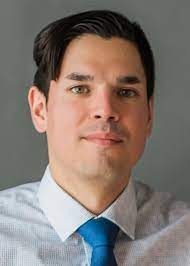
“The fear of not teaching Native history is erasure of our culture,” said Little, who is teaching a Native studies course at USD this fall. “If you’re being taught only certain things, and you see that you’re not existing in the history being taught, it’s detrimental for students to not see themselves in their culture.”
For non-Natives, learning about indigenous people and culture will expand their worldview, Little said, ultimately making them better people and, in a practical sense, more marketable in the workplace.
“It’s just really important to get outside your worldview and learn about culture and history whenever you have the opportunity,” he said. “That will only enhance your job prospects and make you more marketable by learning different perspectives.”
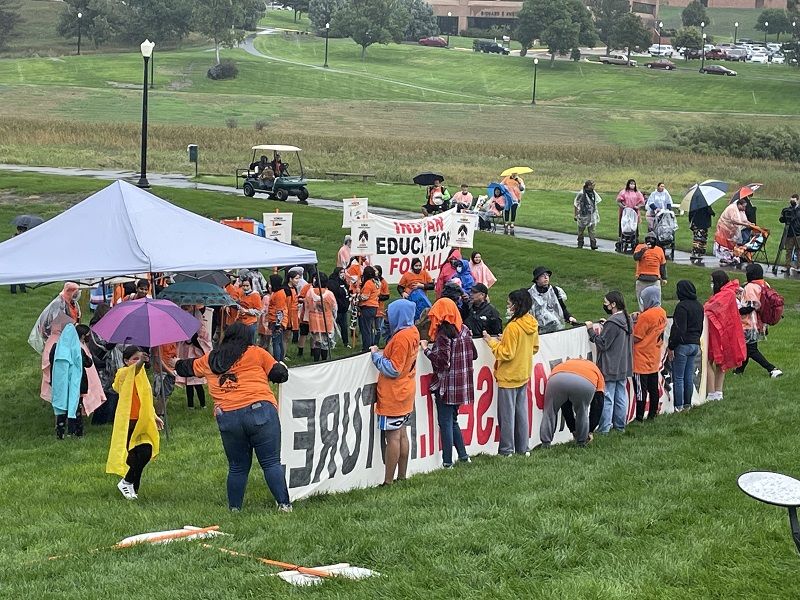
A struggle over standards
The poll was conducted as controversy has swirled around how Native history and culture are taught in South Dakota public schools.
In late July, a 50-member committee that spent months developing a proposed set of social studies standards submitted its report to the state Department of Education. In early August, the DOE put forward an amended version of the proposed standards that removed more than a dozen references to Native American history and culture and altered other references to standards aimed at teaching Native topics.
The department released a statement saying that “adjustments” were made to the proposed standards to provide “greater clarity and focus” for districts, teachers and the public.
The revisions led to an outcry among Native leaders in South Dakota, about 100 of whom, some on horseback, held a protest in Pierre in September to promote accurate and in-depth teaching of Native history and to call for the resignations of DOE officials and Gov. Kristi Noem.
Meanwhile, the DOE received more than 600 public comments on the proposed standards, many opposed to the changes made by the state.
A short time later, Noem said she would delay the revision to the social studies standards.
“The Department of Education changed the working group’s recommendations to the social studies standards significantly, but it is clear to me that there needs to be more public input to bring greater balance and emphasis on our nation’s true and honest history,” Noem said in a release at the time.
In October, Noem announced she was restarting the revision process, and the state is now accepting applications for membership on a new advisory committee.
Noem, a Republican, has sparred with Native tribes over highway checkpoints during the COVID-19 pandemic and was banned from visiting the Pine Ridge Indian Reservation in 2019 after pushing a law aimed at punishing pipeline protesters.
Noem raised concern among some Native groups in early 2021 when she proposed her South Dakota Civics and History Initiative, a two-year, four-pronged plan to create new teaching content, provide new resources and training for teachers, and increase access to civic and historical lessons and experiences for students, especially at the elementary level. When the plan is finalized, use of the program will be optional for school districts.
Some Native leaders worry the initiative will be politicized and ultimately reduce the role Native history plays in public school curricula.
Native-led groups have also said they will bring forth legislation in 2022 to require teaching of Native studies in South Dakota public schools.
Montana and North Dakota already require schools to include Native American education in schools. The North Dakota Legislature this year passed a bill mandating that Native American history be part of the curriculum in all elementary and secondary public and nonpublic schools in the state. Montana in 1972 added to the state constitution the requirement to teach all students on “the unique cultural heritage of American Indians,” noting that the state is “committed in its educational goals to the preservation of their cultural integrity.”
Poll result: How important do you feel it is to include Native American history and culture in the curriculum of South Dakota’s public schools?
RESPONDENT GROUP
Very important/somewhat important — total
Not too important/not important –total
Not sure — total
ALL RESPONDENTS
61.2% very important/26.6% somewhat important — 87.8%
6.4% not too important/2.6% not important — 9.0%
Not sure — 3.2%
INDEPENDENTS
67.2% very important/28.0% somewhat important — 95.2%
2.4% not too important/0.0% not important — 2.4%
Not sure — 2.4%
DEMOCRATS
73.0% very important/19.7% somewhat important — 92.7%
5.1% not too important/0.7% not important — 5.8%
Not sure — 1.5%
REPUBLICANS
51.3% very important/29.8% somewhat important — 81.1%
9.2% not too important/5.0% not important — 14.2%
Not sure — 4.6%
Notes: Mason-Dixon poll conducted Oct. 20-23, 2021; total of 500 registered South Dakota voters; margin of error +/- 4.5%
Balancing what is taught
Jacqueline Sly, a former state representative from Rapid City who now chairs the Board of Education Standards, said Native American history is being taught in public schools now, though it isn’t being done systematically and varies in depth and extent from district to district and sometimes from class to class.
“It is being taught in our schools; I look at the materials they are using and all of them include Native American history,” Sly said. “Could they do more? Potentially, yes. How in depth they go can depend on the teacher.”
Sly praised the Oceti Sakowin Essential Understandings program, adding that the DOE survey showing limited use provides a baseline for education leaders to gauge future efforts to expand usage.
“Based on the findings of the survey, the Department of Education and educators now have a baseline when considering the use and challenges of Oceti Sakowin Essential Understandings,” Sly wrote to News Watch in an email after the DOE survey results were released. “The survey indicates there is still work to do in South Dakota. If 45% of the reporting educators use OSEU in their schools, that is a start; but it does not mean it has to stop there. Let’s use the survey as a tool to guide the work ahead.”
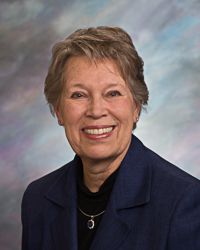
In the DOE survey answered by 718 public and private school educators this year, the vast majority of them teachers, DOE found that only 45% of educators reported implementing the Oceti understandings into their teaching. Only 37% reported that they understand the Oceti understandings well enough to teach them to students.
A report set to be released to the South Dakota Board of Education Standards in mid-November also indicated that use of the Oceti understandings was “primary occurring in small, isolated efforts that lack systematic supports and dedicated time.”
Another survey question indicated that while 55% of respondents said their school celebrates Native Americans Day, only 35% reported that they tell historical events from an indigenous perspective and 9% said their schools do not celebrate Native culture or history at all.
While 47% of administrators reported that the provided Oceti teaching resources to their staffs, only 27% said those resources provided were of “high quality.”
Sly said that while the state sets education standards, local school districts have control over curriculum, or how teaching occurs. One challenge districts will face as they seek to increase or enhance teaching of Native history and culture is deciding what gets left out since the length of the school day will not change.
“If we want to expand on that, what else is given up to make room for that?” Sly said. “Do we give up some time on the Civil War, or on early pioneers in South Dakota? Finding that balance … that’s what teachers and people who are looking at curriculum are struggling with.”
Sly said she was happy to see so many poll respondents in favor of teaching Native history and culture, and remains hopeful that the next attempt to revise the state social studies standards will result in a more cohesive plan for integrating Native studies into curricula.
“I definitely think there’s resources there and we need to be using them as we’re teaching our students about South Dakota history,” Sly said. “As we move into this next revision, we need to look at those concepts and see how we can actually bring those into our standards.”
In August, the DOE announced that about $75,000 in new civics and history grants had been awarded to six school districts in South Dakota.
One of those initial grants, for about $17,000, was awarded to Vermillion High School, where a team of social studies teachers is developing a new history course that will focus in part on Native history in South Dakota. Teachers Joe Delvaux, Lenni Billberg and Shannon Fitzsimmons are leading an effort to develop the new course, which will include significant experiential learning, such as field trips, guest speakers and hands-on activities that bring history to life.
Delvaux said he expects the course will launch in fall 2022 and focus on people who, before European settlement, influenced local and state history, including Native Americans, and on others such as Hutterites and their colonies.
“We want to tell the most authentic story of the land and the people,” he said.
Presenting an in-depth, honest account of history is important to provide students a way to connect with their community but also to become more well-rounded as individuals no matter what path they take in life.
“When you have a sense of place, you feel like you’re connected to a region and a landscape,” Delvaux said. “It roots you deeper in that community, it gives you some ownership of the past, the present and the future if you see and learn about the people who occupied this space before you, and then meeting people and hearing their stories.”
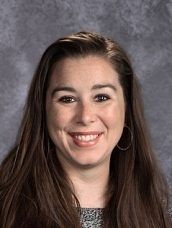
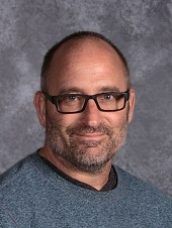
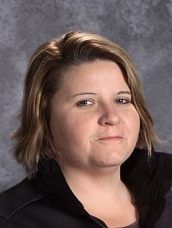
Teachers in Vermillion will benefit from a wealth of local historic sites and a variety of residents who are versed in Native history and culture, Delvaux said. The school also has a cooperative relationship with local Native leaders who are willing to share their knowledge and experience with students, he said. Connections to the University of South Dakota, located in Vermillion, will also be helpful, he said.
Billberg said Vermillion High had a previous course that focused on the history and culture of the Missouri River Valley, where Vermillion is located. She expects the new course will expand on those teachings in a hands-on way.
The state grant will provide teacher training, new materials, field trips, class speakers and events that can take their students deeper than ever into local and state history.
“Those are the things kids will retain and bring home with them, and they’ll want to talk about those experiences,” Billberg said. “As a world, sometimes we don’t look at anything around us. We need kids to know where they belong and where they fit in, and carry that forth in their lives.”
Little said the level of Native history being taught in South Dakota public schools varies by region and district. His own public school experience in south-central South Dakota was uneven, he said.
In sixth grade, Little took a required South Dakota history course with an aged textbook that he said did not include many references to Native history or culture. The book, he said, referred to the massacre at Wounded Knee as a “battle,” which Little said mischaracterized what happened in southwestern South Dakota in 1890.
“It was a limited view of South Dakota history,” he said. “If 300 mostly unarmed men, women and children are murdered, it was clearly not a ‘battle.’”
But Little also took a Lakota language course as a freshman at Winner High School in which he saw films on Native history and was required to read a book by a Native American author.
“That class was important for me to see myself in the curriculum,” he said.
Little said he has mixed feelings about proposals to mandate teaching of Native history and culture in public schools.
While he supports enhanced teaching of Native history, he worries that forcing districts to teach a course may lead to a backlash.
“You’ve got to find that balance because it’s important to have that curriculum and those conversations about whose traditional homelands they’re living on, but if it’s force-fed, people don’t like that,” he said.
Little said a good place to start in South Dakota would be to ensure that the textbooks and materials being used in classrooms present a fair, true history of Native Americans and accurately represent their culture.



